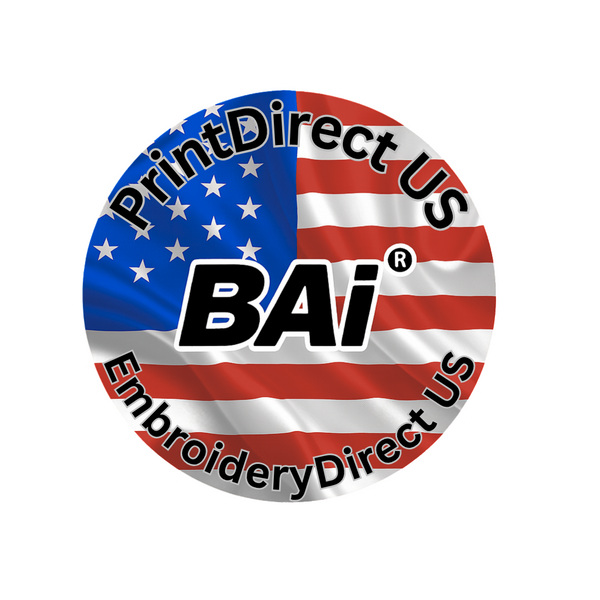
Achieving Quality Results with Direct-to-Film (DTF) Printing
Share
Direct-to-Film (DTF) printing is an innovative and versatile method for producing high-quality, durable prints on a variety of fabrics. With its ability to handle intricate designs and vibrant colors, DTF printing has become increasingly popular in the garment industry. To ensure you achieve the best results, here are some essential techniques and tips for quality DTF printing.
1. Choosing the Right Materials
DTF Film
Use high-quality DTF film specifically designed for the process. The film should have a smooth, even surface to ensure optimal ink adhesion and transfer.
DTF Ink
Select premium DTF inks that offer vibrant colors and excellent durability. Make sure the inks are compatible with your printer and designed for use with DTF printing.
Hot Melt Adhesive Powder
Choose a high-quality hot melt adhesive powder that provides a strong bond between the print and the fabric. The powder should be fine and evenly coated on the printed film for the best results.
2. Preparing Your Design
High-Resolution Images
Use high-resolution images (at least 300 DPI) for your designs. This ensures that the prints are sharp and detailed, capturing the intricacies of your artwork.
Color Management
Employ the correct color profiles for your printer and inks. This helps in achieving accurate color reproduction and consistency across prints. Test prints can help you fine-tune colors to match your desired outcome.
3. Printing Techniques
Printer Settings
Adjust your printer settings according to the type of DTF film and inks you are using. Ensure that the print head height is properly set to avoid any contact with the film during printing. Use the recommended print resolution and speed for optimal results.
Ink Density
Manage ink density to prevent over-saturation, which can lead to bleeding and longer drying times. Use the correct amount of ink for your design and substrate to achieve vibrant, crisp prints.
Print Order
Print colors in layers, starting from the lightest to the darkest. This technique helps in maintaining the vibrancy of lighter colors and ensures even coverage.
4. Applying Hot Melt Adhesive Powder
Even Coating
After printing, apply a thin, even layer of hot melt adhesive powder to the wet ink on the film. Ensure the powder covers the entire printed area to guarantee a strong bond during the transfer process.
Remove Excess Powder
Gently shake off any excess powder to avoid clumping and uneven adhesion. Use a soft brush or a gentle tap to remove the extra powder.
5. Curing the Print
Proper Temperature and Time
Cure the adhesive powder and ink by placing the film in a curing oven or using a heat press. Follow the manufacturer’s guidelines for the correct temperature and curing time. Typically, curing at 320-330°F (160-165°C) for 2-3 minutes yields optimal results.
Even Heat Distribution
Ensure even heat distribution during the curing process to prevent any sections of the print from being under or over-cured. This step is crucial for achieving durable and wash-resistant prints.
6. Transferring the Print
Pre-Press the Fabric
Before transferring the print, pre-press the fabric for a few seconds to remove any moisture and wrinkles. This step ensures a smooth, even surface for the transfer.
Positioning
Carefully position the cured DTF film on the fabric. Use alignment tools or guides to ensure accurate placement.
Heat Press Transfer
Transfer the print using a heat press. Follow the recommended temperature, pressure, and time settings for your specific DTF film and fabric. Typically, pressing at 320-330°F (160-165°C) for 10-15 seconds with medium pressure yields good results.
Peel the Film
Allow the fabric to cool down slightly before peeling the film. For a cold peel, wait until the film is completely cool. For a hot peel, gently peel the film immediately after pressing. Follow the film manufacturer’s instructions for the best results.
7. Post-Press Care
Final Press
After peeling the film, perform a final press with a parchment paper or Teflon sheet for 5-10 seconds. This step helps in setting the print and enhancing its durability.
Washing Instructions
Provide customers with washing instructions to maintain the quality of the print. Recommend washing garments inside out in cold water and avoiding harsh detergents and bleach.
Conclusion
Achieving high-quality results with DTF printing requires careful attention to detail, from selecting the right materials to mastering the printing and transfer processes. By following these techniques and tips, you can produce vibrant, durable prints that stand out. Experiment with different settings and materials to find the best combination for your specific needs.
Happy printing!
